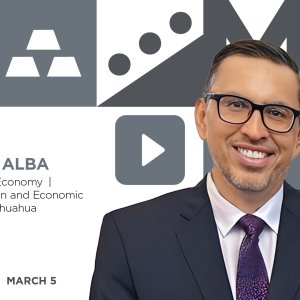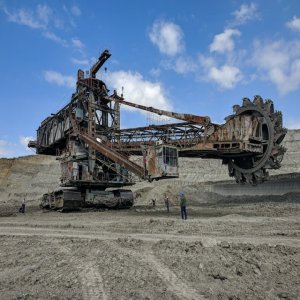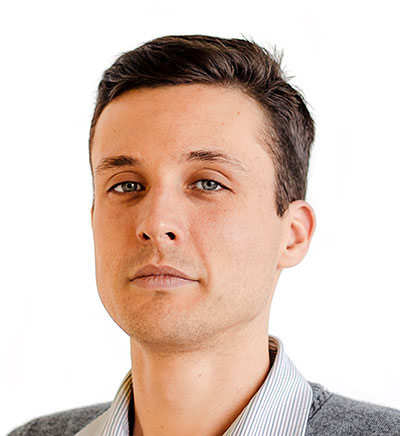Agnico Eagle: Top Engineering for Enhanced Sustainability

STORY INLINE POST
Q: How can stakeholders in Mexico’s mining industry engage in a profitable dialogue?
A: Each industry player tends to have its own data, which is often different from that of other players. Information is the basis for dialogue and decision-making but it is important that all parties have access to the same information. Many times, we see discrepancies between data that is provided by the authorities and industry and nongovernmental organizations. It would be beneficial if all parties involved had the same data.
The problem is that there is no external organization that evaluates which data corresponds to reality. The challenge is to verify databases and validate information. Businesses, despite their efforts to communicate and provide information are seen by some NGOs as being biased. Another recurrent case is public statements that are made by the government in relation to mining concessions and areas used in the mining processes. This data tends to be far from real. We need a neutral and authorized entity that creates common ground and offers the opportunity for all stakeholders to engage in a dialogue. An independent mining observer, a mining roundtable to encourage dialogue or another third-party figure could be good options. Dialogue on the basis of shared hard data would be fruitful for the industry as a whole.
Q: What are the main pillars of Agnico Eagle’s exploration strategy in Mexico?
A: Our highest priority is to increase the span of mine of our operations. They are located in jurisdictions that we already know and trust. Where we have mines, we also have a sizeable workforce and all necessary infrastructure set in place. The success of this exploration strategy can be seen at Pinos Altos. According to the feasibility study, this operation was originally expected to last 10 years. That is, it should have closed in 2019. However, the life of the mine has been extended to 2025 and we are working to extend it to 2027. Our La India operation had 900,000 oz when we acquired it. Through systematic exploration, we have increased this figure to 1.5 million oz.
Another example is the Creston Mascota project, which began operations in 2011. The life of the mine was originally expected to be four years, adding 40,000 oz of gold per year to the larger mine it belongs to. It is now reaching its operational life cycle and has doubled the company's expectations. Very close to Creston Mascota, a deposit was found that we hope to incorporate into our mining plans in 2021, increasing the life of Pinos Altos.
In 2017, we acquired Santa Gertrudis, a gold property 180km from Hermosillo. It produced interesting drilling results and in 2020, approximately 20,000m of drilling were developed. The results invite us to continue exploring and when we have a feasibility study, we will decide whether or not to proceed to the next stage. Santa Gertrudis will remain an exploration project for the next few years.
Q: What was it like to turn Pinos Altos into an underground mine and how will the experience help Sinter with its own transition to underground mining?
A: The transition did not happen all at once. It was in the mine plan from the beginning and we had plenty of time to prepare for it. When the project started, almost 80 percent of the production going to the mill came from the open-pit mine. That has gradually changed. Now, the production from the underground mine contributes more than 90 percent of the total.
The success of Pinos Altos’ transition is the result of planning based on a thorough exploration of the deposit. We are deploying the same strategy at Sinter, a new deposit at Pinos Altos. Sinter’s ore body was not in the original Pinos Altos plan but our exploration team identified its potential and we have incorporated it. Underground mining there will be different from Pinos Altos. The grades are lower and the veins are narrower but Sinter is strategically attractive because it gives us mining flexibility, which is crucial in underground operations. Mines sometimes get all their production from one body but if there is a problem, an alternative source of ore is needed while the problem is being solved. The key is to have options. Sinter fits that role.
Q: What are the main elements of Agnico Eagle's ESG strategy?
A: Agnico Eagle bases its ESG efforts in Mexico on four pillars. First, respect for co-workers. We need professionals to trust us and choose us as their best option and for that to happen, a culture of respect must be implemented. Second, being environmentally responsible. In 2020, Pinos Altos won an award for excellence in environmental restoration from the Mining Association of Canada. The third pillar is safety, a condition that must be guaranteed for the workers. If there is no safety, we cannot expect people to want to work at our operations. We are responsible for providing training to our workers as part of a safety culture. Fourth, we have to understand our communities; that is, we have to be good neighbors. Even if we bring jobs and development, we must be humble and respect our communities. Community involvement has to be multilateral.
If we build on these four pillars, we will strengthen our ESG profile through other initiatives. In relation to governance, the person in charge of our tailings facilities has a direct line to the board of directors. That kind of transparency ensures safety in our operations.
Q: How will Agnico Eagle's new leaching platform in La India strengthen your sustainability strategy?
A: La India consists of three leach pads, each with its own life span. Our team was faced with the complexity of building a leach pad on the steep slopes of the mountain range. Looking at options, the idea of building the leach pad extension on a pit that had already served its useful life was born. The complexity level was high but our engineers were able to build the project. We will, therefore, reuse an area that has already been part of our mining operations. It is an innovative approach for repurposing construction spaces and optimizing areas. For this project, we consulted external experts with experience in geotechnical engineering who are supporting our team and validating the safety and viability of the team's ideas. At Pinos Altos, we are doing something similar: the first pit we built is being filled in with tailings, instead of building a new dam elsewhere.
|
Agnico Eagle is a senior Canadian gold mining company that has produced precious metals since 1957. Its operating mines are located in Canada, Finland and Mexico, with exploration activities in each of these countries as well as in the US and Sweden. |








 By Alejandro Ehrenberg | Journalist and Industry Analyst -
Thu, 12/03/2020 - 13:45
By Alejandro Ehrenberg | Journalist and Industry Analyst -
Thu, 12/03/2020 - 13:45













